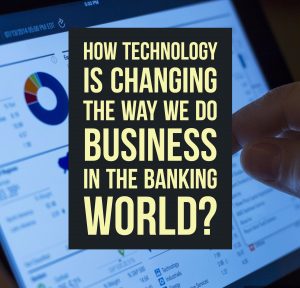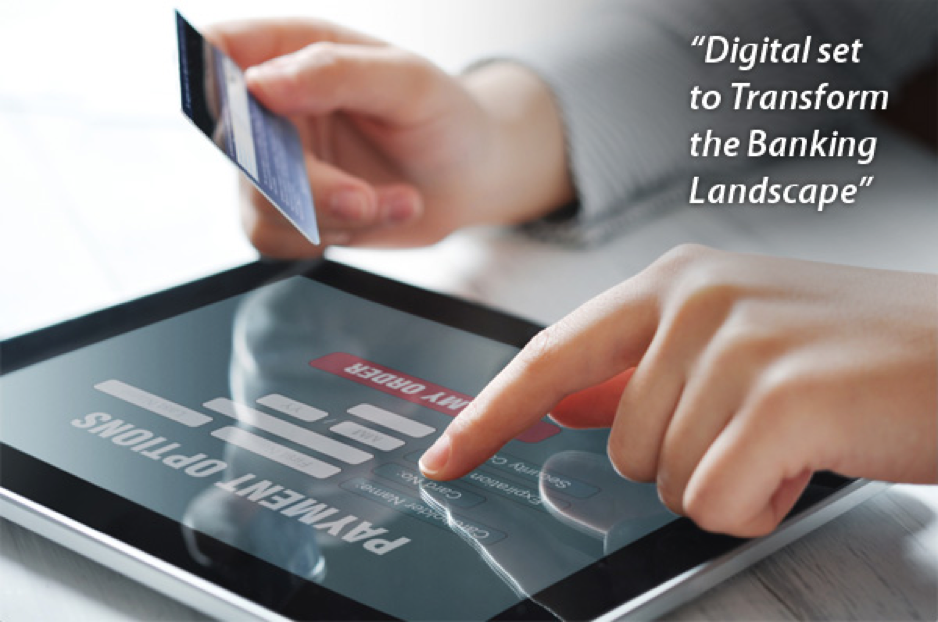
Technology has changed banking and its associated activities forever. Moreover, this change is a continuous process. Despite being one of the oldest forms of business in the world, the advent of technology has changed how this form of business works.
For example, the first bank was opened in Italy in 1472 and it operates till date. That means that the bank must have had invested millions of dollars to keep up with the speed of changing technology and remain relevant in the life of its customers.
Effects of Technology on Business
There is one thing that is common among all forms of businesses – everything that speeds up the production or attracts more customers is always welcomed. A majority of such things is a result of technology. That is the reason why businesses tend to change their infrastructure time and again and adapt to the changing technology.
A number of businesses, in fact, a majority of them are now conducted on computers or smartphone. Technology has offered people millions of software, databases, personal schedules and stuff to make things easy for them while conducting their business.
The Way We Do Banking Now
Banks and its branches still remain integral to the customers, just like before. However, the way banking conduct business now has changed for sure, majorly because of the changes in technology.
Earlier, banks were not open at all days of the week. The cash counters used to close almost two hours after the lunch and people could only get information about their bank account and the balance cash by visiting the bank branch and filling a small strip of paper before handing it over to the cashier.
But the situation is a lot different today. People can have a 24X7 access to their money stored at the bank and they do not need to visit the bank anymore. While some may still like to visit the bank, but millions of people today now prefer to download the mobile phone app to make payments, check balance and apply for a credit card or a debit card purchase.
Moreover, a majority of banking-related queries are now cleared up over Facebook, email, phone, Skype or Twitter. That is, people do not have to queue up at the bank like their fathers and grandfathers to book an appointment with the manager or to talk to the cashier.
4 Ways Technology Has Changed Banking
While technology might have changed the way we conduct business in the banking world in a million ways, there are a few major identifiable aspects that have indeed made a big impact in the banking world. Some of these aspects are discussed below:
(1) Banking On-the-Go
Ever heard of banking without banks? Well, this has actually become true with the advent in technology. Now, a person hardly has to visit a bank. Just open an account and the rest of the things are taken care of online, even when the person is travelling. Moreover, banks are willing to provide door-to-door service for practically every service that they provide. For example, people can request for a new cheque book or file a credit card request and all the banking material would eventually arrive at their doorstep.
(2) One Tap Payment
Just about a decade ago, people literally had to walk up to telephone exchange and powerhouses, stand in queue and wait for their turn before they could pay the bill. Now, everything can be done through a single tap on their phone. People no longer need to stand in a queue to make payments. Technological innovations like Google Wallet allows users to store their personal banking information such as debit card details and credit card number on their phones, that too safely. This contactless technology has invaded the banks too.
(3) Reduced Customer Service
The introduction of mobile banking and online banking means that banks no longer need to provide an extensive face-to-face service for features that are majorly being used by the customers through their smartphones and computers. The elimination of generic customer service has paved way for a more specialized personal service that is tailored according to the needs of the individual customers. This is particularly important as a customer phones the bank for some query or personally visits the branch.
(4) Biometrics
People no longer need to remember their passwords for authentication. They can simply take advantage of the relatively new form of authentication that uses biometrics. Banks all over the world have started to welcome the use of biometrics for authentication. Techniques such as fingerprint and palm identification and facial and voice recognition have become relatively common now. Moreover, these are considered to be relatively safe forms of customer authentication.
Adapting to the changing technology has, in fact, become one of the most important transitions for banks around the world. In the wake of getting a competitive advantage over its rival, banks have now become relatively open to new technologies and new innovative ways through which banking is now conducted. NeoGrowth Credit Pvt. Ltd. which gives businesses funds or working capital is one institution that has matched its steps with the technological up-gradations.
It would be an understatement to say that it is yet to be seen how the banking would evolve in the future or whether the adaptation would be enough to keep up with the changing needs of the customer.
For more info refer: https://www.neogrowth.in/applyNow/
You can also download NeoGrowth-business-loans PDF file for your reference.
Post By NeoGrowth Credit – Business Loans specially created for Retailers & Online Sellers
For more Information – email us on digital@neogrowth.in
Or Give Missed Call @ 08080861166


 Lending, one of the primary functions of the business, is also changing. Various players like
Lending, one of the primary functions of the business, is also changing. Various players like